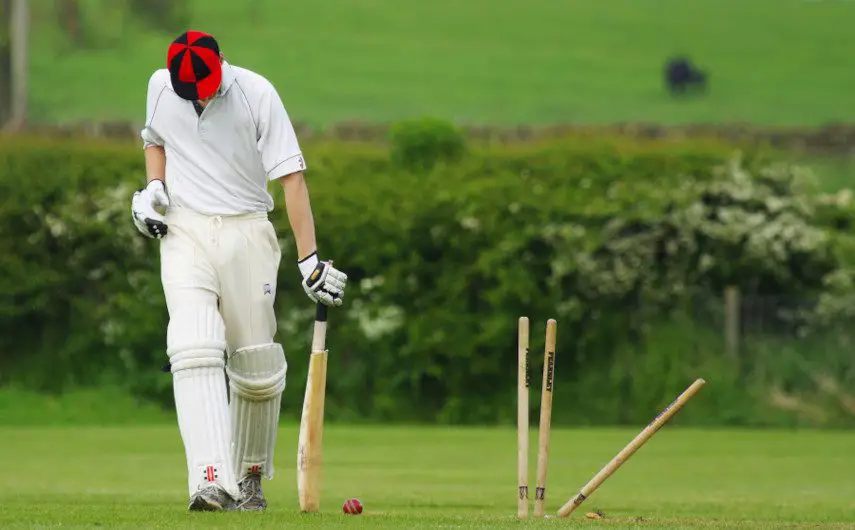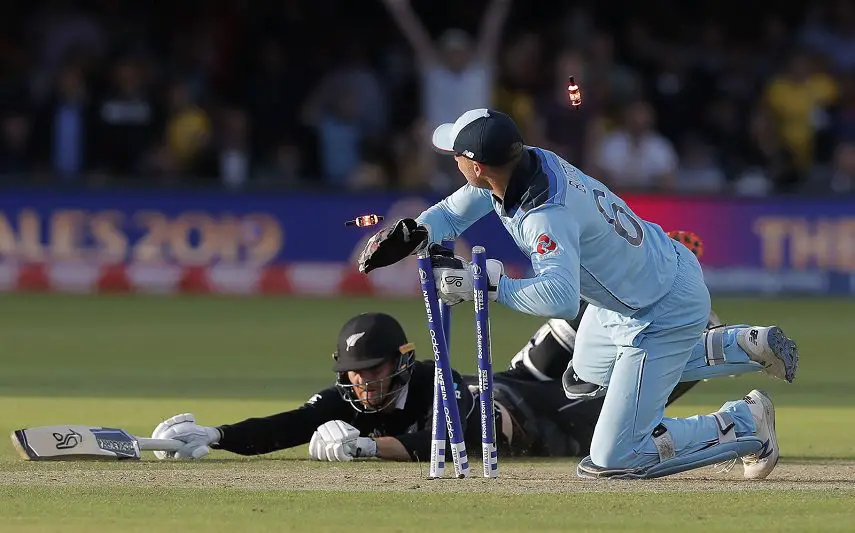Table of Contents
T20 cricket has revolutionised the game since it first came onto the scene and has achieved its aim of bringing more fans into the sport, so let’s take a closer look at the phenomenon.
What is T20 Cricket?
T20 cricket is the shortest form of the game currently played by all ICC affiliated countries. Each side has twenty overs in which to score more runs than their opponents, so the action is fast paced and more likely to attract a bigger audience.
T20 matches generally follow the established laws of cricket but there are some twists on some of those rules.
Twenty20 Cricket Rules
How Long Does a T20 Match Last?
Each side in a T20 match will receive a maximum of 20 overs. The team batting first will set the highest possible total while the side taking the second innings will need to overtake that target.
If a team loses all ten wickets inside their 20 allocated overs, the innings will come to an end at that point.
Time Limit
The onus is on the bowling team to complete their 20 overs inside the 75-minute time limit. One hour and 15 minutes means that the sides have an average of three minutes and 45 seconds with which to complete each over.
The limit is in place to help the game run smoothly and swiftly. If the bowling side is not in position to deliver their final over within the allotted time, a six-run penalty will be awarded to the batting team.
Free Hit Rule in T20
The free hit rule applies following an illegal no ball delivery from the bowling side. The law mirrors that of other limited overs formats in the sense that a free hit will follow the no ball.
With the exception of run out and obstructing the field, all forms of dismissal are taken out of the equation when the free hit is delivered. The batsman, therefore, essentially has a free swing at the ball.

Five Run Penalty
Penalty runs is a general law in cricket but we tend to see it in T20 more than in other forms of the game. Fake fielding and deliberately fielding the ball with a cap or item of clothing can also result in penalty runs being awarded.
In T20 cricket, either umpire can also award five penalty runs to the batting team if they feel that the fielding side is deliberately wasting time.
Bowling Restrictions in T20
A team must use a minimum of five bowlers in each innings. Every one of the bowlers used has a maximum allocation of four overs. It is possible for the fielding captain to use as many bowlers as they wish but that four-over limit will apply in each case.
Powerplay in T20
Rules regarding the powerplay may vary depending on which tournament is involved. In most cases, there is a six-over powerplay at the start of the innings where fielding restrictions are in place.
In certain competitions, most notably Australia’s Big Bash, there is a four-over powerplay at the start, followed by a two-over ‘surge’ at a later point in the innings.

90-second Rule
Once a wicket has fallen, the new batsman must be ready to face their next delivery within the following 90 seconds. If they are not, the fielding side has the right to appeal and the new batter can be dismissed under the ‘Timed Out’ law.
Bowl-Out
A bowl out has long been used as way of deciding a result in a match that has been ruined by the weather. If no result is possible, each team may line up five bowlers and their task is to bowl at a single stump.
No batsmen will stand in their way and the team who hits the stumps on most occasions will win the match.
Super Over
A Super Over is used in the event of the scores being tied at the end of a T20 match. Both teams now get one over to score more runs than the opposition. Only one bowler can be used and each batting side can use up a maximum of two wickets.
Twenty20 Leagues
England were the first country to officially adopt a T20 tournament back in 2003. The current competition, known as the T20 Blast, is still run every year.
In the present day, all major nations have their own domestic T20 competitions but the biggest of them all is the Indian Premier League (IPL). First held in 2008, the big money behind the IPL attracts the best limited overs cricketers from around the world.
Other notable competitions to look out for include the Big Bash in Australia, the Pakistan Super League, the Lanka Premier League and the Caribbean Premier League.
Twenty20 World Cup
Twenty20 Cricket has a World Cup and the tournament was first run in 2007. In total, there have been seven editions of the competition, up to and including the 2024 World Cup which was hosted by the United States and the West Indies.
The scheduling has been quite erratic in the first few years of the tournament. In theory, we should expect to see a global tournament every four years but the organisers have rarely kept to this timeframe. This means that the next T20 World Cup will take place in India and Sri Lanka in 2026.
16 teams are set to progress to the main tournament after a series of qualifiers. In the first seven editions of the T20 World Cup, the West Indies, England and India have been the most successful sides with two victories each. Meanwhile, Pakistan, Australia and Sri Lanka have each won one T20 World Cup.
Which is the Best T20 Competition in the World?
Each cricket playing country might argue that their domestic T20 competition is the best, but most neutrals would point to the Indian Premier League. The IPL was introduced in 2008, so it wasn’t the first tournament of its kind, but it’s certainly grown to be the biggest.
The financial backing behind the IPL allows teams to attract the best players in the short forms of the game. If there is a clash between this and other competitions, the wages and sign on fees involved mean that the Indian Premier League will always take precedence.
This means that the fans benefit too. They get to see the biggest names in cricket take part and high quality is always guaranteed. Some say that the IPL is taking up too much space in the cricket calendar, but in terms of the biggest tournament, it’s impossible to beat.
Is T20 Cricket Under Threat from Other Formats?
Since T20 cricket was first played in 2003, some tournaments have experimented with even shorter formats. The most conventional of these is T10 cricket which features just ten overs a side for each team.
The Abu Dhabi T10 league is the most famous, but there are ten over versions in other parts of the world, including the European Cricket League.
In England and Wales, cricket virtually stops in August for the annual running of The Hundred. While this tournament has helped to attract new fans to cricket, it isn’t popular with many older viewers.
The Hundred is controversial because it plays around with the rules. Instead of delivering six-ball overs, bowlers send down “sets” of five balls. Ten balls are delivered from the same end before the play is switched.
In the West Indies, there is a domestic tournament known as the 6ixty. As the name suggests, there are 60 balls to be bowled in each innings, so it’s similar to T10 cricket.
The 6ixty, however, adds extra rules. A team is considered to be all out when they lose six wickets. The first five overs of an innings are all delivered from the same end, before the players switch for the second set of five.
Each of these formats has its followers, but they can’t match T20 for excitement just yet. It will be interesting to see if they can build an audience or if they fall off the schedules.


